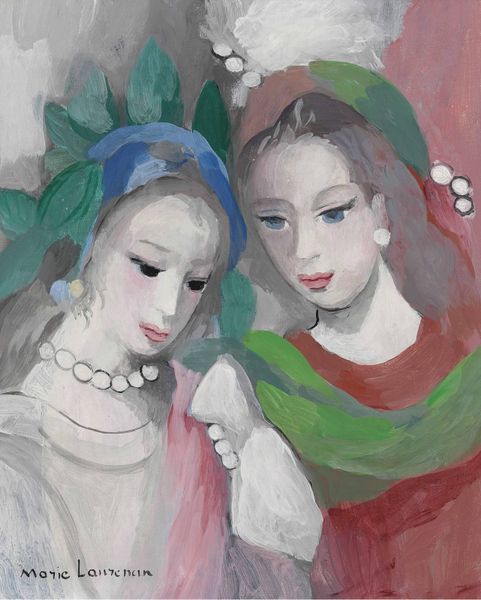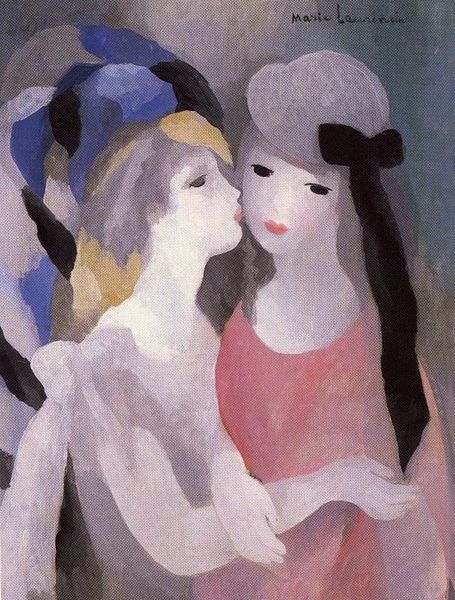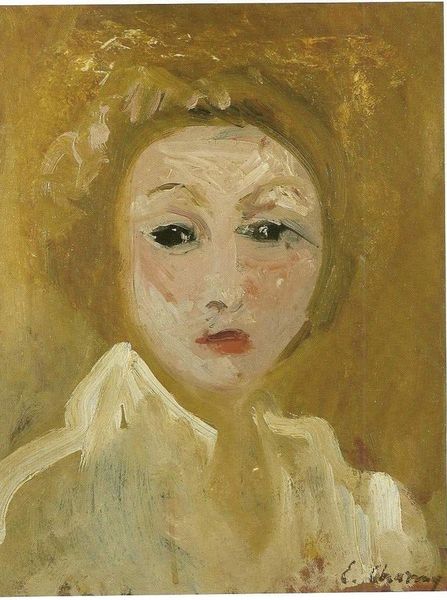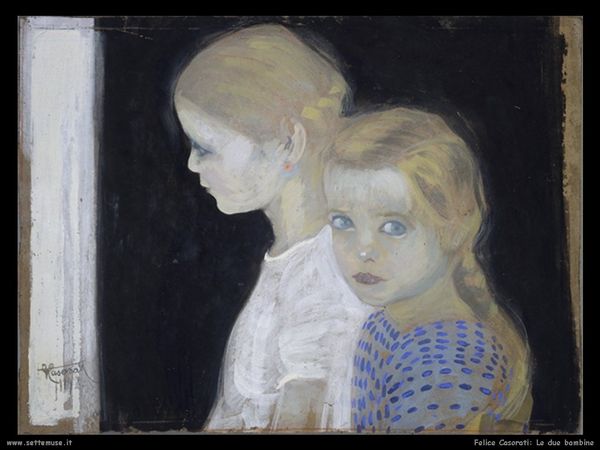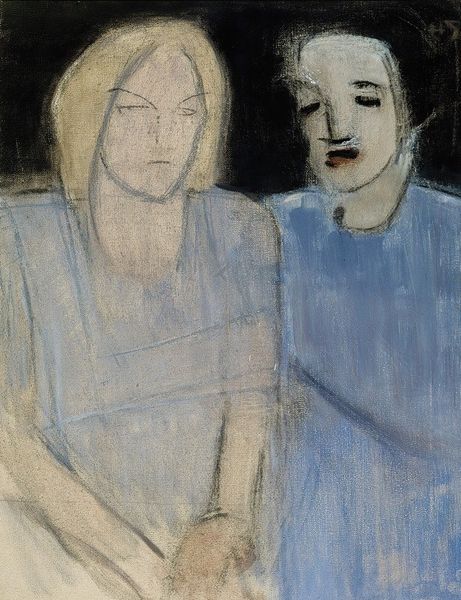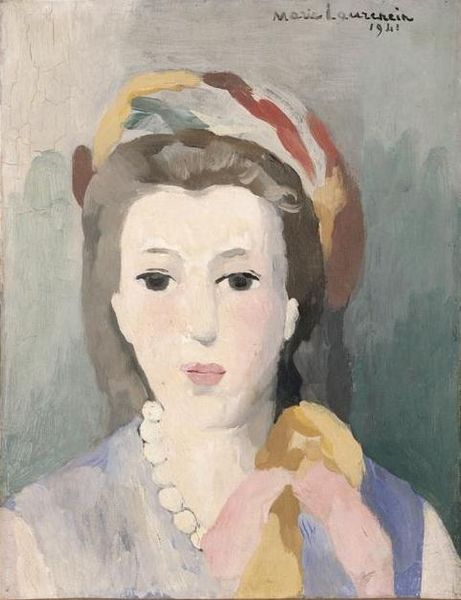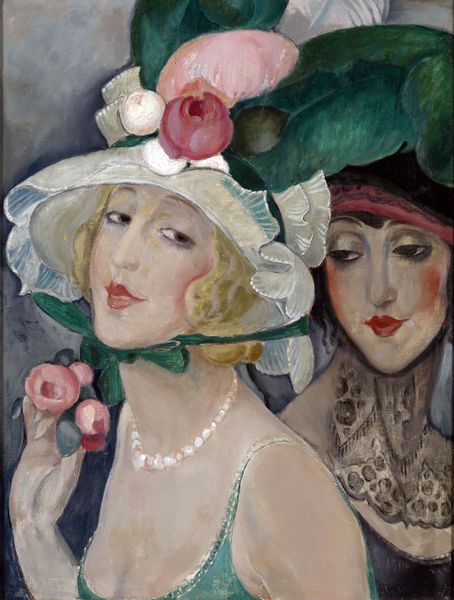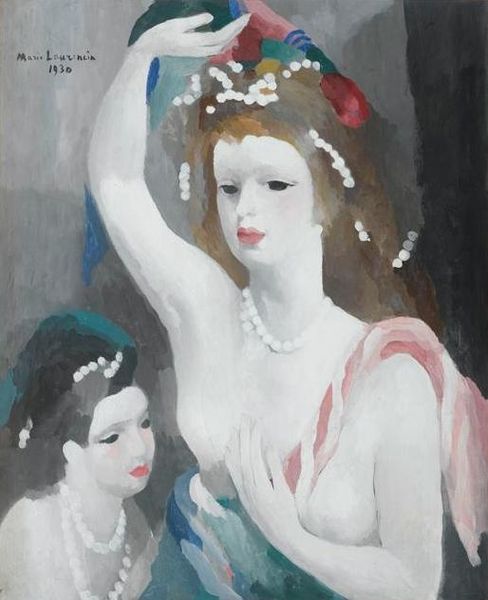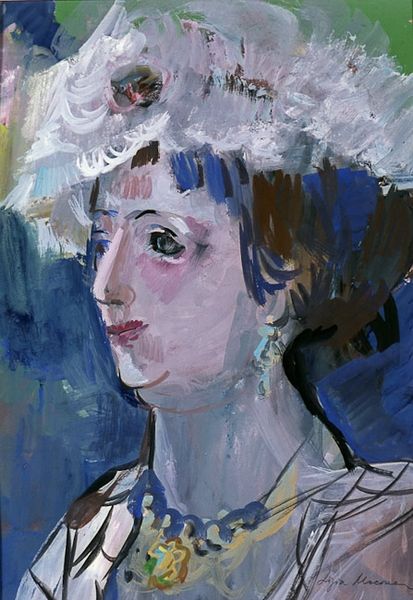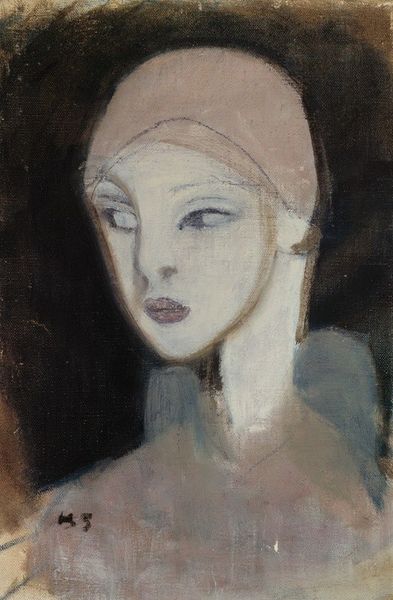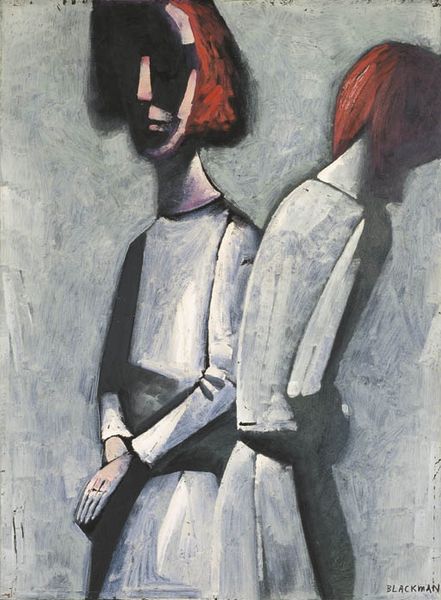
painting, oil-paint
#
portrait
#
cubism
#
head
#
face
#
painting
#
oil-paint
#
figuration
#
oil painting
#
group-portraits
#
portrait drawing
#
portrait art
#
modernism
Copyright: Marie Laurencin,Fair Use
Curator: Marie Laurencin's "Two Heads," painted in 1935. The soft color palette feels very feminine. What strikes you first about this work? Editor: Their almost porcelain skin, contrasted by the slightly cubist composition – a fragile beauty navigating a fragmented world. It evokes a certain melancholic detachment, wouldn't you say? Curator: The oil paint application appears deliberately thin and translucent. This choice of materiality allows the texture of the canvas beneath to subtly influence the visual impact. I’m intrigued by her decision to foreground the canvas itself. Editor: Absolutely, and note the context. Laurencin painted this in 1935. Consider the rise of fascism, the looming threat of war... The dreamlike quality of the piece could be interpreted as a retreat from a harsh reality. It's interesting to think about these portraits as representing a kind of idealized femininity under duress, reflecting larger anxieties around women’s roles and safety. Curator: It also raises questions about the production and consumption of images of women, especially considering the materials used— the relative accessibility of oil paints during that period would indicate how this type of image became part of a larger visual culture. Editor: The subjects seem self-contained, but they are physically close. I'd speculate that the women are perhaps sisters, which complicates the portrait dynamic even further, hinting at themes of connection and perhaps even competition. They represent, potentially, both solidarity and individual vulnerability at the same time. Curator: Given Laurencin's focus on materials and techniques, it’s worth looking at other portraits of the period and examining the methods. I wonder how access to different qualities of pigment may have shifted. It has everything to do with class, patronage and distribution, all influencing the final object we are looking at. Editor: It's remarkable how she can blend this dreamlike elegance with an underlying sense of tension shaped by these complicated factors. Curator: Exactly, these material aspects can enhance our interpretation and push for broader discussions about art history’s production. Editor: Agreed. Thinking about art through this lens provides layers that amplify both Laurencin's unique visual signature and her historical impact.
Comments
No comments
Be the first to comment and join the conversation on the ultimate creative platform.
